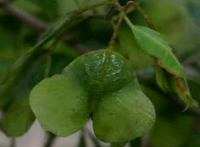In-silico investigation of the antischizophrenic activity of phytochemical constituents of Hymenocardia acida Tul. (Phyllantaceae)
Main Article Content
Abstract
Hymenocardia acida is a medicinal plant used in the treatment of schizophrenia. Previous studies have shown that H. acida possessed anti-schizophrenic activity in vivo. This plant was reported to contain several phytochemical constituents, and the pharmacological activities of the plant might be related to its phytochemical constituents. Therefore, this study aimed to investigate the in-silico anti-schizophrenic activity of the phytochemical compounds of H.acida. The phytochemical constituents of H.acida were examined for their anti-schizophrenic activity using in-silico molecular docking studies. Sixteen compounds were docked against three receptors namely, D1 dopamine receptor (PDB I.D 7JOZ), D2 dopamine receptor (PDB I.D 6CM4), and serotonin receptor 5HT1A (PDB I.D 7E2Y). The results obtained from molecular docking studies proved that phytochemical compounds present in H. acida have adequate affinity for both dopaminergic and serotonergic receptors. Therefore, this study demonstrates that H. acida possesses antipsychotic properties, which may be attributed to its phytochemical compounds due to their strong binding affinity to the respective dopaminergic and serotonergic receptors.
Downloads
Article Details

This work is licensed under a Creative Commons Attribution-NonCommercial-NoDerivatives 4.0 International License.
References
1. Amoateng P, Adjei S, Osei-safo D, Kukuia KK, Bekoe EO, Karikari KT, Kombian SB. Extract of Synedrella nodiflora (L) Gaertn exhibits antipsychotic properties in murine models of psychosis. BMC Complement. Altern. Med. 2017; 17(389): 1-4
2. Howes OD, McDonald C, Cannon M, Arseneault L Boydell J, Murray RM. Pathways to schizophrenia: the impact of environmental factors. Int. J. Neuropsychopharmacol. 2004; 7(1): S7-S13.
3. Jäger AK, Saaby L. Flavonoids and the CNS. Mol. 2011; 16(2):1471-1485.
4. Venkataramaiah, C. Modulations in the ATPases during ketamine-induced schizophrenia and regulatory effect of 3-(3,4-dimethyl phenyl)-1-(4-methoxyphenyl) prop-2-en-1one: An in vivo and in silico studies. J. Recept. Signal Transduction Res. 2020; 40(2): 148-156.
5. Fei LC, Gaurav A, Al-Nema M. In silico investigations on the probable macromolecular drug targets involved in the anti-schizophrenia activity of Terminallia bellerica. Lett Org Chem. 2020; 19(1): 83-92.
6. Abdullahi AA. Trends and challenges of traditional medicine in Africa. Afr J Tradit Complement Altern Med. 2011; 8(S): 115-123.
7. Danladi S, Lawal NB, Alhassan AM. Phytochemical screening and evaluation of antischizophrenic activity of methanol leaf extract of Hymenocardia acida Tul. (Phyllantaceae). FUDMA J Sci. 2024; 8(1): 228-32.
8. Danladi S, Lawal NB, Alhassan AM. Review on the phytochemical and pharmacological activities of Hymenocardia acida tul (Phyllantaceae). J Curr Biomed Res. 2021; 1(3):92-105.
9. Wysokiński A, Kozłowska E, Szczepocka E, Łucka A, Agier J, Brzezińska-Błaszczyk E, Sobierajska K. Expression of dopamine D1− 4 and serotonin 5-HT1A-3A receptors in blood mononuclear cells in schizophrenia. Front. Psychiatry. 2021; 12:1-16.
10. Dallakyan S, Olson AJ. Small-molecule library screening by docking with PyRx. In: Jonathan EH (Eds.). New York: Springer Science Business Media; 2015. p243-251
11. Du X, Li Y, Xia YL, Ai SM, Liang J, Sang P, Ji XL and Liu SQ. Insights into protein-ligand interactions: mechanisms, models, and methods. Int J Mol Sci. 2016; 17(2):144.
12. Ijoma IK, Okafor CE, Ajiwe VI. Computational Studies of 5-methoxypsolaren as potential deoxyhemoglobin S polymerization inhibitor. Trop J Nat Prod Res. 2024; 8(10):8835 – 8841.
13. Oyewole RO, Oyebamiji AK, Semire B. Theoretical calculations of molecular descriptors for anticancer activities of 1,2,3-triazole-pyrimidine derivatives against gastric cancer cell line (MGC-803): DFT, QSAR and docking approaches. Heliyon. 2020; 6(5): 1-13.
14. Lipinski CA, Lombardo F, Dominy BW, Feeney PJ. Experimental and computational approaches to estimate solubility and permeability in drug discovery and development settings. Adv Drug Delivery Rev. 1997; 23: 3-25.
15. Lin JH, Yamazaki M. Rule of p-glycoprotein in pharmacokinetics: clinical implications. Clin. Pharmacokinet. 2003; 42: 59-98.
16. Zhao M, Ma J, Li M, ZhangY, Jiang B, Zhao X and Qin S. Cytochrome P450 enzymes and drug metabolism in humans. Int J Mol Sci. 2021; 22(23): 1-16
17. Jaoa N, Dos SP, Sina T, Manar AA, Ali RS, Babette W, Ignacio AR, Pierre-oliver C, Jurgen B, and Mladen VT. The poorly membrane permeable antipsychotic drugs amisulpride and sulprideare substrates of organic cation transporters from the SLC22 family. The AAPS Journal. 2014; 16(6):1247–1258
18. Banerjee P, Eckert OA, Schrey AK, Preissner R. ProTox-II: a web server for the prediction of toxicity of chemicals. Nucleic Acids Res. 2018; 46: W 257-W263.


